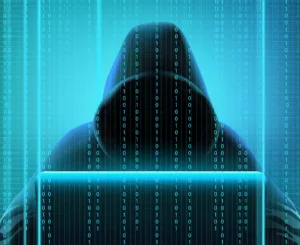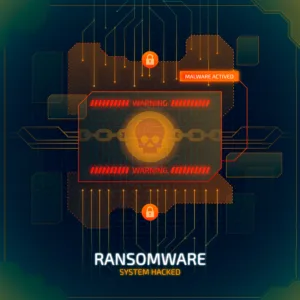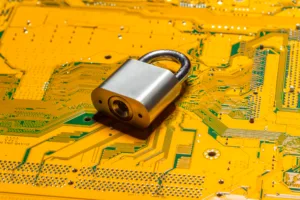
Table of Contents
In this blog post, we will delve into the first 90 days of a Chief Information Security Officer (CISO).
Introduction – CISO
The Chief Information Security Officer (CISO) is a vital and influential position within an organization’s leadership team. As the head of the information security function, the CISO is responsible for safeguarding the company’s sensitive data, intellectual property, and critical systems from cyber threats and attacks.
Now, let’s talk about the crucial first 90 days in shaping the CISO’s tenure. These initial three months are an intense and pivotal period for the CISO to establish their credibility and influence within the organization. During this time, the CISO must immerse themselves in understanding the company’s cybersecurity landscape. This means conducting a thorough assessment of existing security practices, technology, and team capabilities. By doing so, they can identify strengths and weaknesses, which will help them form a strategic plan to elevate the organization’s security posture.
The first 90 days is also an opportunity for the CISO to demonstrate leadership and direction. By setting clear short-term and long-term security goals, they can lay the foundation for their team’s work and align their objectives with the overall business mission. This will help the team understand the direction they are heading and feel motivated to achieve those goals.
Preparing for first 90 days as a CISO
Understanding the organization’s cybersecurity landscape is like exploring the uncharted territory of digital security. As the new Chief Information Security Officer (CISO), you’ll embark on a journey to uncover the strengths and vulnerabilities that lie within the company’s digital realm. First and foremost, you’ll delve into the current state of the organization’s cybersecurity measures. This means rolling up your sleeves and examining the existing security policies, procedures, and practices in place. You’ll take a close look at how data is protected, what technologies are being used, and how the team responds to potential threats.
The process of reviewing these security policies might feel like navigating a complex maze, but it’s a critical step. You’ll identify areas where the organization is doing well and celebrate those successes. Simultaneously, you’ll pinpoint the gaps and weaknesses that demand your attention and expertise.
While you’re on this exploration, you’ll come across valuable allies – the key stakeholders. These individuals and teams play crucial roles in different parts of the organization. Building relationships with them is essential for your success as a CISO.
You’ll sit down with department heads, executives, and IT teams to understand their specific security needs and challenges. By listening to their perspectives and concerns, you’ll gain insights into how security aligns with the overall business objectives. These conversations lay the groundwork for collaboration and support in your cybersecurity endeavors. As you forge these relationships, remember that communication is key. Speak their language, and avoid drowning them in technical jargon. Help them understand the importance of cybersecurity in safeguarding not only the company’s data but also its reputation and future growth.
This journey of understanding and relationship-building is not without its challenges. You may encounter resistance to change or skepticism about the value of cybersecurity. Stay patient and persistent – winning hearts and minds takes time, but it’s well worth the effort.
Assessing the Current Security Posture
As you go about your assessment, you might come across areas where the organization is doing well in terms of security practices. It’s essential to recognize and celebrate these strengths, as they form the foundation upon which you’ll build a more secure future.
On the other hand, you may uncover potential vulnerabilities and weaknesses. This is not a cause for alarm; instead, it presents an opportunity for improvement. It’s like finding a loose brick in the fortress wall – you’ll want to patch it up to ensure no potential intruders can exploit it.
Your goal is to gain a comprehensive understanding of the organization’s security strengths and weaknesses. By identifying the gaps in the defense, you can prioritize your efforts and allocate resources where they are needed most.
During this assessment, you’ll also need to consider the organization’s unique risks and challenges. Every company has its own specific set of threats based on the industry it operates in, the types of data it handles, and its digital footprint. Understanding these factors will help you tailor your security approach to fit the organization’s needs accurately.
Remember, this is not a one-time evaluation. The cybersecurity landscape is dynamic, and threats are constantly evolving. As a vigilant CISO, you’ll need to conduct regular security assessments to stay ahead of potential risks and keep your organization’s defenses resilient.
Overall, the process of assessing the current security posture is about gaining insights and making informed decisions. By understanding the strengths and weaknesses, you’ll be better equipped to steer the organization towards a more secure and protected future. Your role as a CISO is not just about finding problems – it’s about implementing effective solutions and creating a culture of security awareness that permeates throughout the entire organization.
Defining a Strategic Security Vision
Imagine you’re a visionary architect, sketching out the blueprint for a secure and fortified digital future for your organization. As the Chief Information Security Officer (CISO), you hold the power to define a strategic security vision that will guide your team towards success.
Your first step is to envision what this secure future looks like. What are the core principles that will underpin your organization’s cybersecurity approach? What values and beliefs will guide your team’s decisions and actions? This is the foundation upon which your strategic security vision will be built.
Once you have your vision in mind, it’s time to set clear and achievable short-term and long-term security goals. These are like stepping stones that will lead your organization from where it stands today to where you envision it in the future. Short-term goals provide immediate wins and quick wins, while long-term goals ensure you stay on track for sustainable security.
As you craft these goals, it’s crucial to keep the organization’s overall mission in mind. How does your security strategy align with the company’s broader objectives and aspirations? Your vision shouldn’t exist in isolation but should seamlessly integrate with the organization’s mission to create a unified direction.
With your goals in place, you can now create a roadmap for security improvement initiatives. This roadmap outlines the path your team will take to achieve those goals step by step. It’s like charting the course for your digital fortress’s expansion and enhancement.
The roadmap should be practical, flexible, and well-communicated to your team and stakeholders. It’ll act as a guidebook, providing a clear sense of direction for everyone involved. As you navigate through the roadmap, you’ll adapt to changing circumstances and new challenges, always keeping your vision in sight.
As the visionary architect of your organization’s cybersecurity, you have the opportunity to shape a resilient and fortified digital landscape. With a strategic security vision, well-defined goals, and a roadmap to guide you, your team will work together towards a more secure and successful future. Embrace your role as the visionary guardian of your digital fortress, and together, you’ll build a strong and impenetrable defense against cyber threats.
Building and Leading the Security Team
As the Chief Information Security Officer (CISO), you’re not just a security expert; you’re also a team leader, bringing together a group of talented individuals to form a cohesive and effective security team.
The first step in building your dream team is evaluating the existing security team’s skills and capabilities. Just like a coach assessing the strengths of their players, you’ll want to understand each team member’s expertise and experience. Take the time to get to know them on a personal level too, as it’s essential to understand what motivates and drives each individual.
As you evaluate the team, you may find areas where their skills align perfectly with your security vision. Recognize and celebrate these talents, as they’ll be the backbone of your team’s success. At the same time, be open to the possibility of skill gaps that need attention.
Establishing clear roles and responsibilities is the next crucial step. Think of it as assigning positions on a sports team; each member has a specific role that contributes to the overall success of the team. Communicate these roles and responsibilities transparently, making sure everyone understands their unique contribution to the security strategy.
Encourage collaboration and teamwork within the group. Emphasize the importance of open communication and idea sharing, where everyone’s voice is valued. A strong security team is not just about individual brilliance; it’s about synergy and collective effort.
As the leader of this team, you set the tone and inspire others to do their best. Be approachable, supportive, and open to feedback. Foster an environment where team members feel comfortable raising concerns and contributing their insights. Your role is not just to lead but also to mentor and guide your team to reach their full potential.
Engaging with the Wider Organization
As the Chief Information Security Officer (CISO), your mission extends beyond the boundaries of your own team. To build a strong defense against cyber threats, you must engage with the wider organization and foster a security-aware culture that permeates throughout every department.
Collaboration is the key to success in this endeavor. Think of yourself as a bridge-builder, connecting with other departments to form a united front against potential security risks. Reach out to department heads and team leaders, and listen to their unique perspectives and concerns. By understanding their specific needs, you’ll be better equipped to tailor security measures that align with their workflows and objectives.
During these collaborative efforts, be an advocate for cybersecurity. Educate your colleagues on the importance of security and its impact on the organization as a whole. Translate technical jargon into relatable terms that resonate with them. Show them that security isn’t just a burden but a shared responsibility that benefits everyone.
One of the most effective ways to foster a security-aware culture is through security awareness training for all employees. This training is like equipping everyone with the knowledge and tools to spot potential security threats and respond appropriately. Offer engaging and interactive sessions that empower employees to become the first line of defense against cyberattacks.
Be patient and understanding during this process. Not everyone may have the same level of familiarity with cybersecurity concepts, and that’s okay. Encourage questions and create a safe space for employees to seek clarification and share their concerns.
Recognize and celebrate employees who contribute to the organization’s security efforts. Positive reinforcement goes a long way in encouraging a security-aware mindset across the organization.
Remember that building a security-aware culture is an ongoing journey. Be persistent and consistent in your efforts. Over time, you’ll see the organization evolve into a more security-conscious and proactive entity, where every employee plays an active role in safeguarding the organization’s digital assets.
Strengthening Security Policies and Procedures
In the ever-evolving world of cybersecurity, strengthening security policies and procedures is like reinforcing the walls of your organization’s digital fortress. As the Chief Information Security Officer (CISO), you’ll play a pivotal role in ensuring these defenses are up to the task of protecting your valuable assets.
The first step in this process is to review and update security policies to align with the latest best practices. Think of it as dusting off old blueprints and incorporating the latest security advancements. Regularly assess the effectiveness of existing policies and make necessary adjustments to address new threats and vulnerabilities.
Implementing robust incident response and disaster recovery plans is like having a well-rehearsed emergency protocol in place. Just like fire drills prepare us for unforeseen disasters, these plans equip your organization to respond swiftly and effectively to security incidents. Collaborate with other departments to ensure a coordinated and efficient response that minimizes potential damage.
Ensuring compliance with relevant regulations and standards is like making sure your fortress meets the required building codes. Stay informed about the latest cybersecurity regulations and industry standards that apply to your organization. Tailor your security measures to meet these requirements and maintain a proactive approach to compliance.
Additionally, be prepared to adapt and evolve as new threats emerge and technologies change. Cybersecurity is a dynamic field, and your security policies and procedures should reflect this reality. Regularly monitor the threat landscape and be open to feedback from your team and external sources to make continuous improvements.
Above all, remember that strengthening security policies and procedures is not just about implementing rigid rules but also about creating a culture of security awareness. Empower employees to be active participants in the organization’s security efforts. Encourage them to report suspicious activities and provide ongoing security training to keep them informed and vigilant.
By diligently reviewing and updating security policies, implementing robust incident response and disaster recovery plans, and ensuring compliance with regulations, you’ll fortify your organization’s defenses. In doing so, you’ll build a resilient and secure digital fortress that stands strong against the ever-present threats in the cyber world. Your dedication to this critical task will safeguard your organization’s assets and ensure its continued success in the face of evolving cyber challenges.
Implementing Security Technologies
As the Chief Information Security Officer (CISO), you wear the hat of a tech-savvy strategist when it comes to implementing security technologies. Your goal is to arm your digital fortress with the most effective tools and solutions to safeguard against cyber threats.
The first step in this journey is assessing the organization’s unique security needs. It’s like identifying the chinks in your fortress’s armor, understanding where the vulnerabilities lie. By analyzing the organization’s digital landscape and potential risks, you’ll be better equipped to select the right security tools.
Once you’ve identified the security tools and solutions that align with your organization’s needs, it’s time to evaluate and select the best ones. It’s a bit like choosing the right weapons for your digital defense arsenal. Look for tools that offer comprehensive protection, ease of use, and seamless integration into your existing infrastructure.
Implementing these security technologies is like reinforcing your fortress with state-of-the-art defenses. Work closely with your team and other stakeholders to ensure a smooth and effective deployment. Provide thorough training to your staff to empower them to utilize these tools to their fullest potential.
But the job doesn’t end with implementation. Monitoring and measuring the effectiveness of the implemented technologies is crucial to staying ahead of potential threats. Regularly assess how well these tools are performing and whether they are meeting their intended purpose. Be open to tweaking or replacing them if needed to ensure the best possible defense.
Keep in mind that security technologies are not a one-size-fits-all solution. Just as your fortress may have different layers of defenses, your digital security strategy might involve a combination of tools that complement each other. Work collaboratively with vendors and security experts to stay updated on the latest advancements and ensure your technologies remain cutting-edge.
Moreover, technology alone isn’t enough. Remember the human element – your team members play a vital role in making these technologies effective. Encourage a proactive mindset and continuous learning among your staff to maximize the impact of these tools.
Creating a Culture of Continuous Improvement
As the Chief Information Security Officer (CISO), you have the power to shape the very essence of your organization’s cybersecurity culture. Your goal is to create a dynamic and agile environment that embraces continuous improvement, much like a garden that thrives with care and nurturing.
Encouraging a proactive and learning-oriented approach to security is the cornerstone of this culture. It’s about instilling a mindset where every team member feels empowered to be an active defender of the organization’s digital fortress. Emphasize that security is not just your responsibility as the CISO but a shared mission that involves everyone.
Foster an atmosphere where curiosity and creativity are celebrated. Encourage team members to ask questions, seek answers, and explore innovative solutions to security challenges. Mistakes should be seen as opportunities for growth and learning, not as failures. When the team feels safe to experiment and learn from their experiences, they’ll be more willing to take proactive measures.
Conducting regular security training and workshops is like nurturing your garden with essential nutrients. Provide your team with the knowledge and tools they need to stay ahead of evolving threats. These sessions should be engaging, interactive, and tailored to the team’s specific roles and responsibilities.
Remember that learning is not a one-time event. Security threats are constantly evolving, and your team’s knowledge should evolve with them. Consider ongoing training, webinars, and access to relevant resources to keep your team well-informed.
Lead by example in your own pursuit of knowledge. Share your own learning experiences and demonstrate a thirst for staying updated on the latest security trends. When your team sees your commitment to continuous improvement, they’ll be inspired to follow suit.
Measuring and Reporting Security Metrics
As the Chief Information Security Officer (CISO), you’re like the navigator of your organization’s cybersecurity journey. Measuring and reporting security metrics is akin to keeping a close eye on your digital compass, ensuring your team is on the right course towards a secure future.
The first step in this process is defining key performance indicators (KPIs) for security. These are like the milestones you set along your journey, marking progress and guiding your team’s efforts. Collaborate with key stakeholders to identify the most meaningful KPIs that align with your security goals and the organization’s overall objectives.
Once your KPIs are in place, regularly monitor and analyze security metrics. It’s like taking periodic readings of your compass to ensure you’re heading in the right direction. Keep track of data related to incidents, response times, threat detection rates, and other relevant factors.
Remember, metrics alone don’t tell the full story. It’s crucial to put them in context. Analyze the data to gain meaningful insights into your security program’s strengths and weaknesses. Are there trends or patterns that require attention? Are your KPIs being met, or do you need to adjust your strategy?
When it comes to reporting security metrics, be transparent and communicate in a language that resonates with your audience. Whether you’re presenting to the executive team or other departments, avoid technical jargon and focus on the business impact of your security efforts.
Your reports should highlight not just the numbers but also the actions taken and the progress made towards your security goals. Use visuals and narratives to make the information digestible and impactful. When reporting, be open about challenges and areas that need improvement. A realistic assessment allows your team to course-correct and make data-driven decisions to strengthen your cybersecurity approach.
Conclusion
The first 90 days for a Chief Information Security Officer (CISO) are a critical period that sets the tone for their entire tenure. It’s like laying the foundation for a secure digital future. During this time, strategic planning and leadership play a pivotal role in shaping the organization’s cybersecurity landscape.
As a CISO, these initial three months provide a unique opportunity to assess the organization’s current security posture, identify vulnerabilities, and define a strategic vision. It’s like creating a roadmap for the journey ahead, ensuring that security objectives align with the organization’s overall mission. Leadership shines during this phase as CISOs build relationships with key stakeholders and foster a security-aware culture. Collaboration with other departments and effective communication become the pillars of success, ensuring everyone understands their role in fortifying the digital fortress.
But the journey doesn’t end there. Continuous learning and adaptation are the lifeblood of a successful CISO. The cyber landscape is ever-changing, with new threats emerging regularly. To stay ahead, CISOs must stay curious, embrace new technologies, and be open to new ideas. The first 90 days are not just a period of adjustment; they’re a pivotal opportunity for CISOs to shine as strategic leaders, always ready to learn and adapt in their roles. With dedication and vision, they’ll set a course for a secure and thriving digital future.
Read more on https://cybertechworld.co.in for insightful cybersecurity related content.




















Howdy! This post couldn’t be written any better! Reading through this post reminds me of my previous room mate! He always kept chatting about this. I will forward this write-up to him. Pretty sure he will have a good read. Many thanks for sharing!
Write more, thats all I have to say. Literally, it seems as though you relied on the video to make your point. You clearly know what youre talking about, why waste your intelligence on just posting videos to your site when you could be giving us something informative to read?
Good site! I truly love how it is simple on my eyes and the data are well written. I’m wondering how I could be notified when a new post has been made. I’ve subscribed to your RSS which must do the trick! Have a great day!